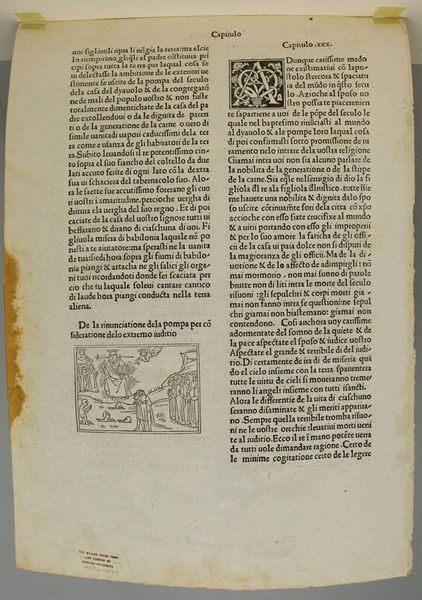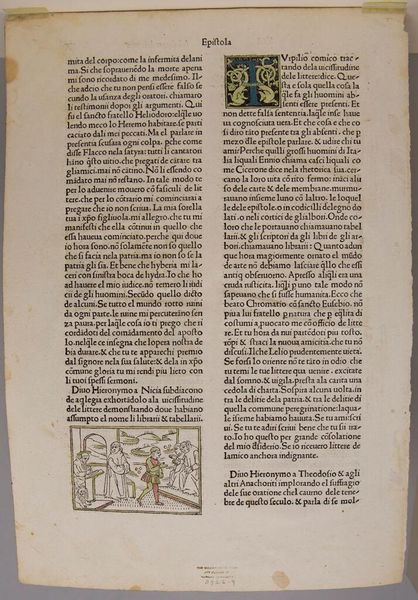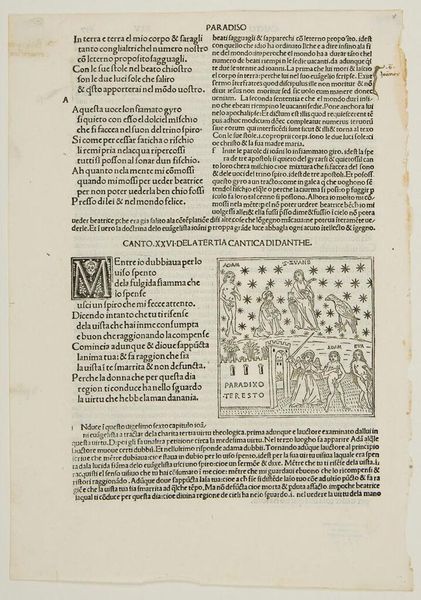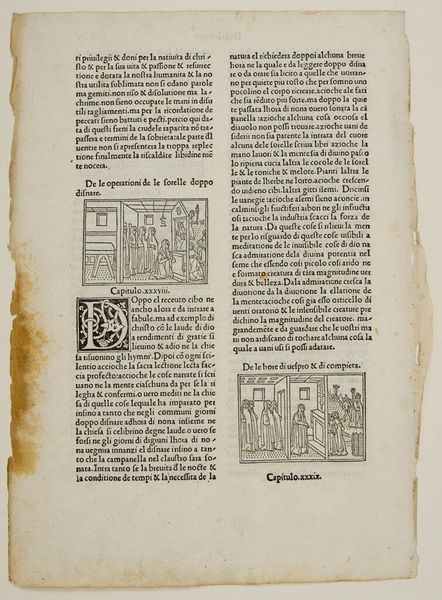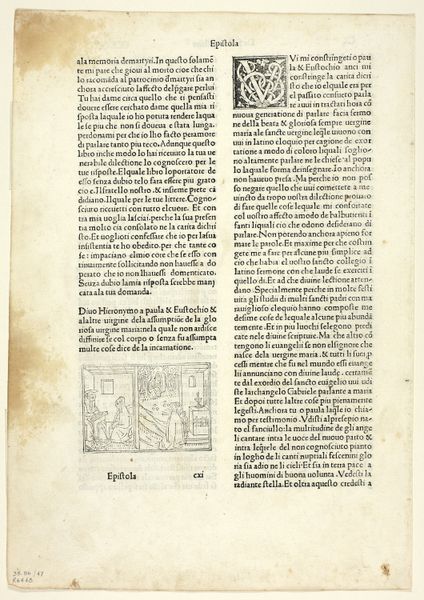
drawing, print, paper, woodcut
#
portrait
#
drawing
# print
#
paper
#
11_renaissance
#
woodcut
#
northern-renaissance
Copyright: Public domain
Curator: I’d like to direct our attention to this intriguing page from the 16th century, specifically to a print called "Folly at the Lectern" by Hans Holbein the Younger. Editor: It’s a visually dense page. The close packed text gives way to some playful sketching in the margins; the whole effect is quite intriguing in its busyness. Curator: Holbein rendered it in 1515 using woodcut on paper, a medium that allows for such intricate detail. The work resides here at the Kunstmuseum Basel. For me, the enduring cultural appeal lies in the way Holbein weds textual authority with subversive marginalia. Editor: I see what you mean. The fool figure with his elaborate hat and knowing gesture becomes an irreverent interruption of established dogma, doesn't he? The text almost feels like a stage for these miniature dramas. Curator: Exactly. The marginal figure speaks to a long cultural memory. Jesters, fools, figures of misrule–these roles are as old as time. Their disruption allows a space for cultural commentary and social truths. Editor: This print invites speculation about Holbein's sociopolitical viewpoint. How much does the fool function as his mouthpiece? Is the intention to actually undermine authority or provide some kind of…relief? Curator: That's the captivating ambiguity of satire isn't it? And the beauty of symbols – they aren’t univocal. Here the artist uses symbols to question the structures and sources of meaning. I find myself pondering whether he questions the social role of this volume itself! Editor: Ultimately, this woodcut serves as a reminder that art, even within the confines of a book page, can hold dissenting ideas. The tension between order and chaos makes it deeply compelling. Curator: It reveals the dynamic between order and its subversive counterparts—it reflects the cultural memory, it reveals social norms that continue over the years. Editor: Agreed. This page serves as an invitation to interpret art in its fuller socio-historical role.
Comments
No comments
Be the first to comment and join the conversation on the ultimate creative platform.
